The announcement was, of course, opened up by Dr. Lisa Su, AMD CEO and President, revealing a bit more details about the RNDA 3 architecture and chiplet GPU design.
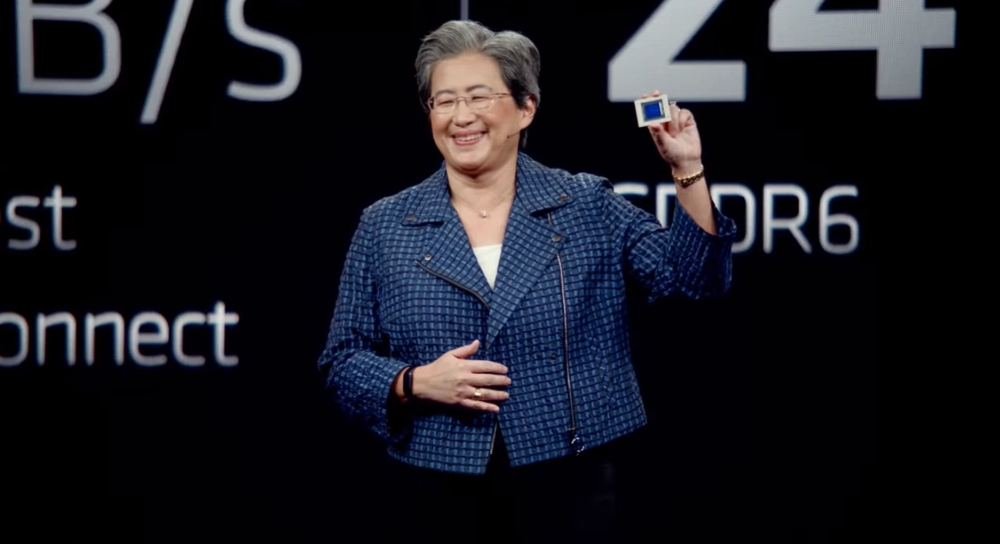
The GPU actually uses TSMC's 5nm GCD (Graphics Compute Die) and 6nm MCDs (Memory Cache Die), allowing AMD to pack 58 billion transistors on a 300mm2 GDC and 6x37mm2 MCDs, for a compute performance of 61 TFLOPs.
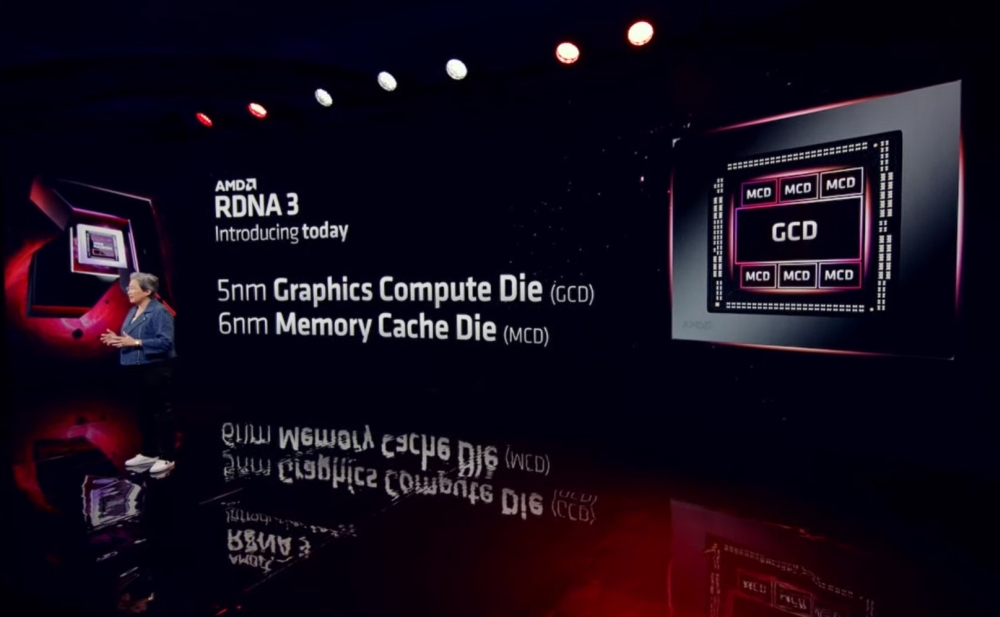
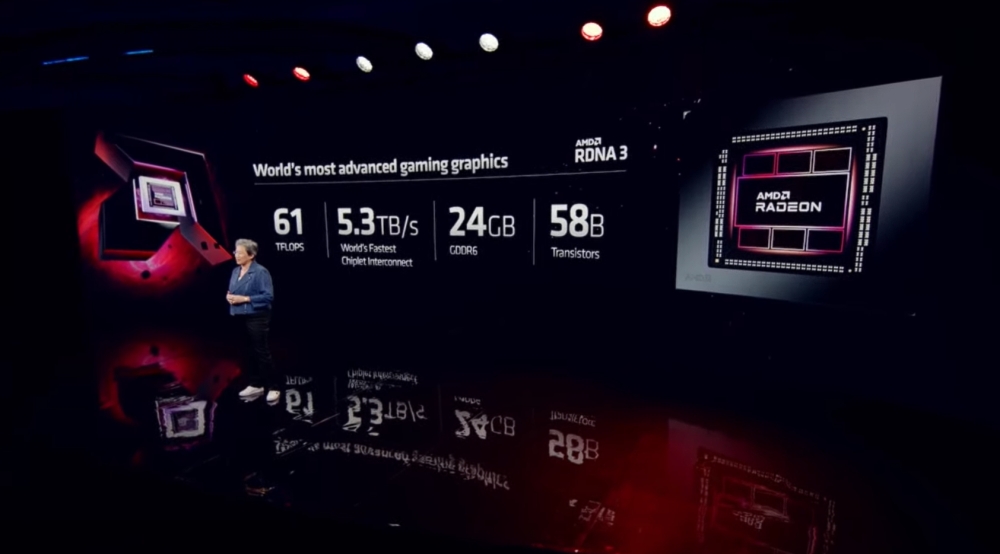
The GDC essentially packs all the GPU core functions like compute units, as well as display and media engines, while MCDs pack 64-bit GDDR6 memory controllers, as well as AMD Infinity Cache (up to 96MB).
AMD is bringing several improvements to its Compute Units, giving them the ability to execute up to two instructions per cycle, calling them Dual Issue Stream Processors. This move has its benefits as well as drawbacks and it is left to be seen how it will affect performance in certain scenarios. There is also an increased VGPR (Vector General Purpose Register) by 50 percent, compared to RDNA 2, as well as dedicated AI accelerators (for up to 2.7x performance), and added the 2nd gen RT accelerator, offering up to 50 percent more performance per CU.
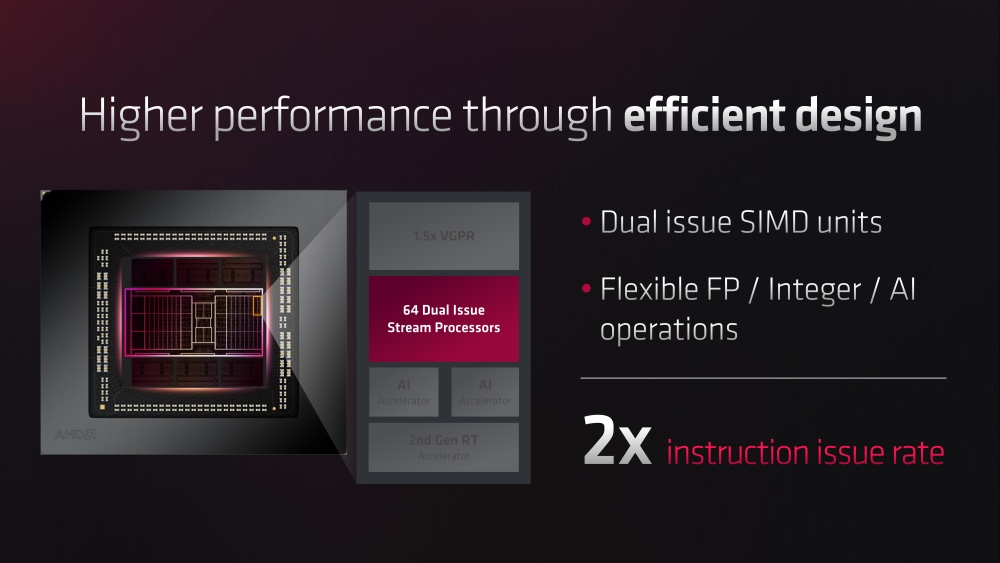

As detailed by AMD, this will give the Radeon RX 7900 series a decent ray tracing performance improvement compared to the Radeon RX 6950 XT.
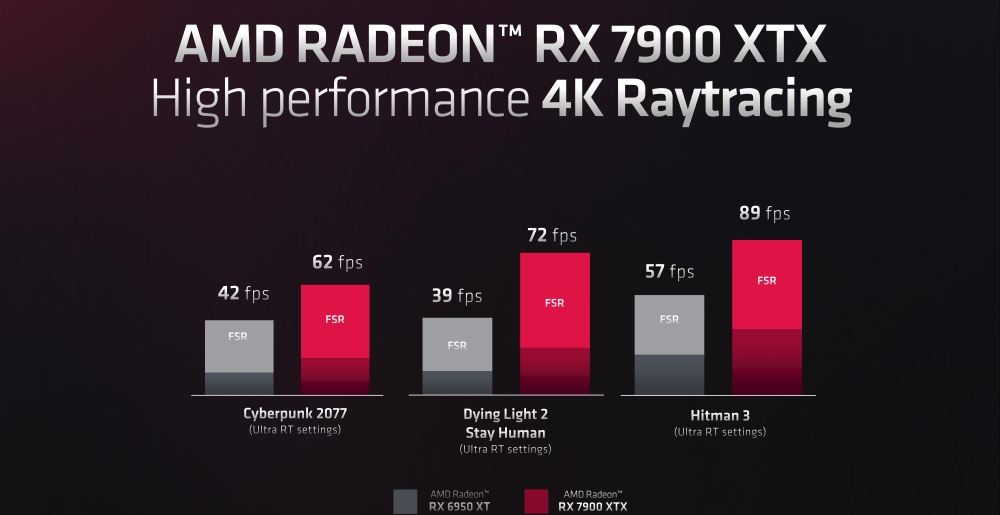
Another thing that caught everyone's attention is the "decoupled clocks", which means that shaders and front-end run at different clock speeds. In the case of the 7900 XTX, shaders are running at 2.3GHz while the front-end is clocked at 2.5GHz. While AMD did not go into great detail, it did say that it brings a 15 percent increase in frequency compared to the previous generation and offers up to 25 percent power savings, so it will be interesting to see what kind of performance-per-Watt improvements will this actually brings.
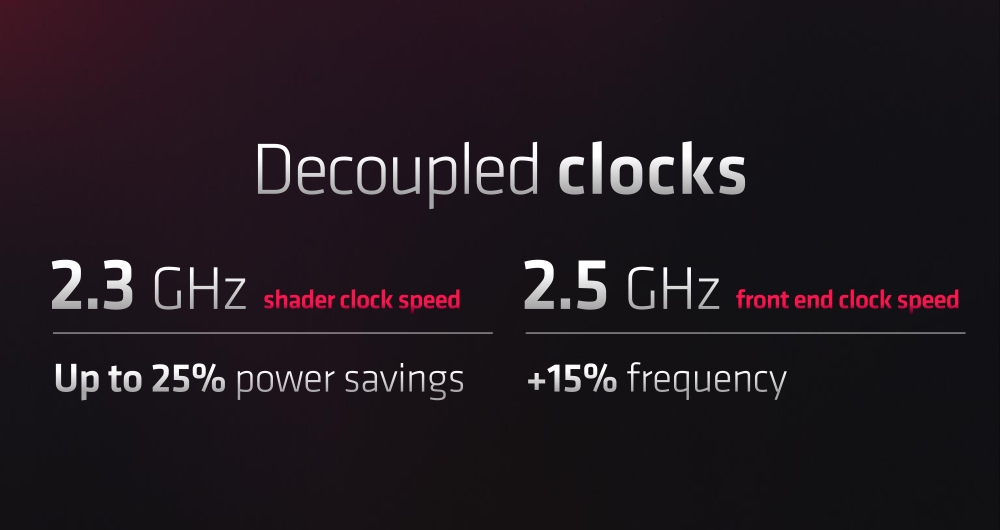
AMD Radiance Display engine which brings support for DisplayPort 2.1 is definitely one of the stars of the show, offering display link bandwidth of up to 54 Gbps, 12-bit-per-channel, and support for 8K at 165Hz and 4K at 480Hz gaming. While there is only a handful of monitors that can push this, AMD did give a sneak peek of the Samsung Odyssey Neo G9 which will be showcased at CES 2023.
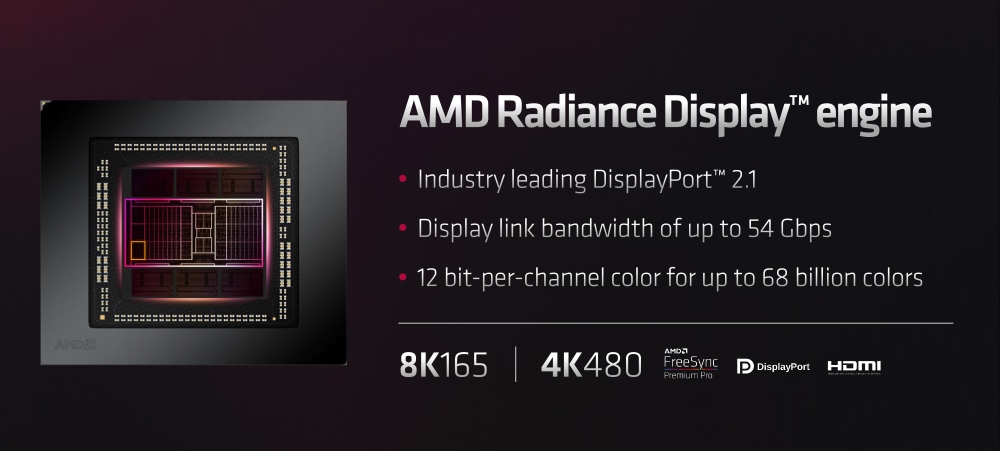
The new dual media engine brings 8K60 AV1 encode/decode, simultaneous encode/decode for AVC/HEVC, AI-enhanced video encode, and a 1.8x engine frequency increase, which leads to up to 7x faster 8K transcoding with AV1 encode.
AMD Radeon RX 7900 XTX and Radeon 7900 XT
The first cards based on AMD's RDNA 3 architecture will be the flagship Radeon RX 7900 XTX and the Radeon RX 7900 XT, both launching on December 13th with prices set at $999 and $899, respectively.

The flagship Radeon RX 7900 XTX seems to be a fully-enabled part, packing 96 CUs and 96MB of AMD Infinity Cache. The game clock is set at 2.3GHz and it comes with 24GB of GDDR6 memory on a 384-bit memory interface. The TBP (Total Board Power) is set at 355W and it needs two 8-pin PCIe power connectors.
AMD was keen to note that the reference design is pretty much the same as on the RX 6950 XT, and the card is 2.5-slots tick and just 1cm longer at 28.7cm.
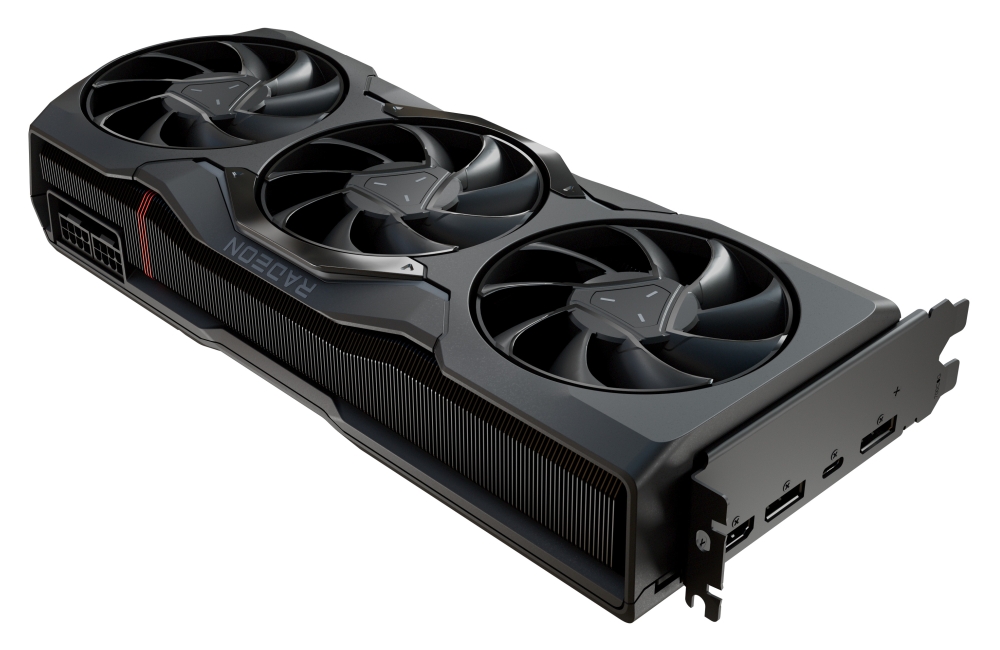
The Radeon RX 7900 XT packs 84 CUs and works at a 2.0GHz Game clock. It also comes with 20GB of GDDR6 memory on a slightly narrower 320-bit memory interface. Its TBP is set at 300W.
The biggest surprise is the $100 difference in price, suggesting there isn't much difference between the RX 7900 XTX and the RX 7900 XT in terms of performance but, of course, we have to wait to see some benchmarks, as AMD's presentation was strangely lacking those numbers (other than a few RT performance figures).
In any case, we'll wait to see how Nvidia will respond with its RTX 4080 16GB, the canceled RX 4080 12GB, and where the Radeon RX 7900 series fit in terms of performance per Watt at those prices.




